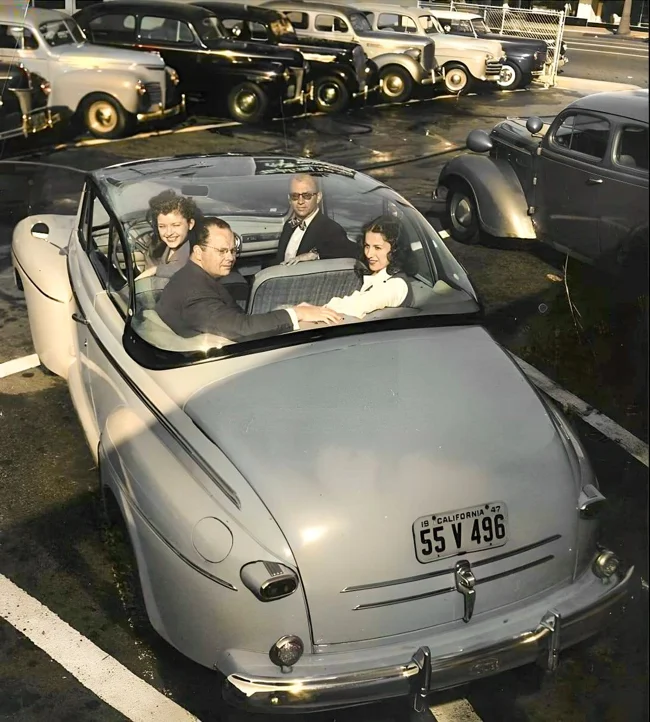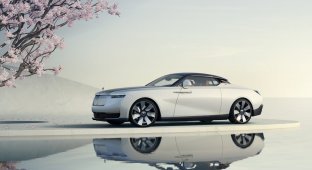Interesting and sometimes funny photos on the automotive theme (21 photos)
The most unusual types of vehicles and simply interesting automobiles 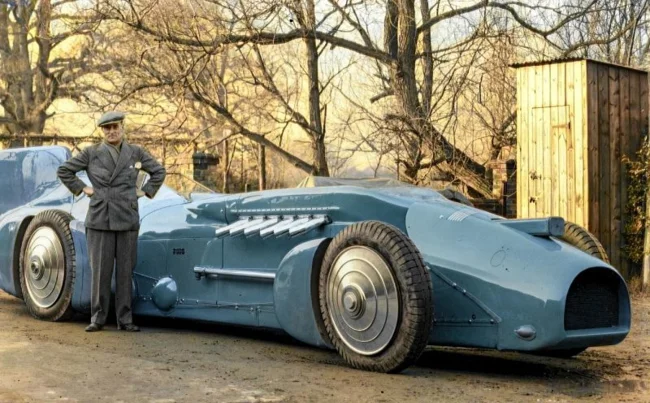
A two-person tent installed on the roof of a car, 1960. 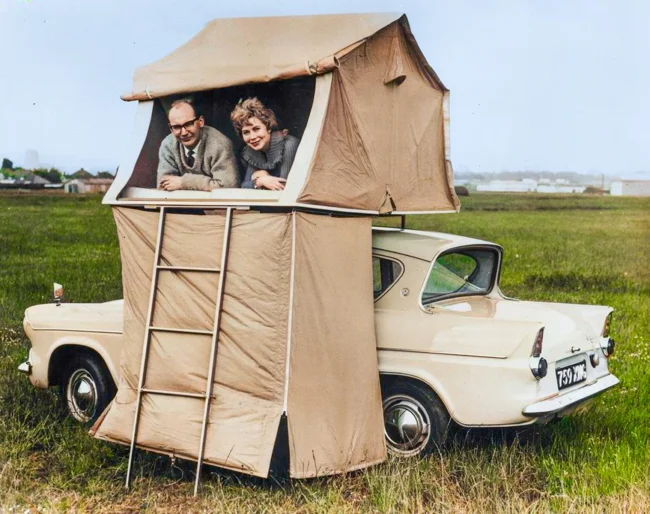
The world's only Rolls-Royce on tracks.
This unusual car belonged to the revolutionary, major Marxist theorist, Soviet politician and statesman Vladimir Lenin.
Rolls-Royce 40/50 HP was purchased in Great Britain in 1922, converted into a sled in 1928.
This most interesting exhibit is kept in the Gorki Leninskiye Museum Estate near Moscow. 
A single-seat three-wheeled car Morgan Three Wheeler Runabout, 1910. 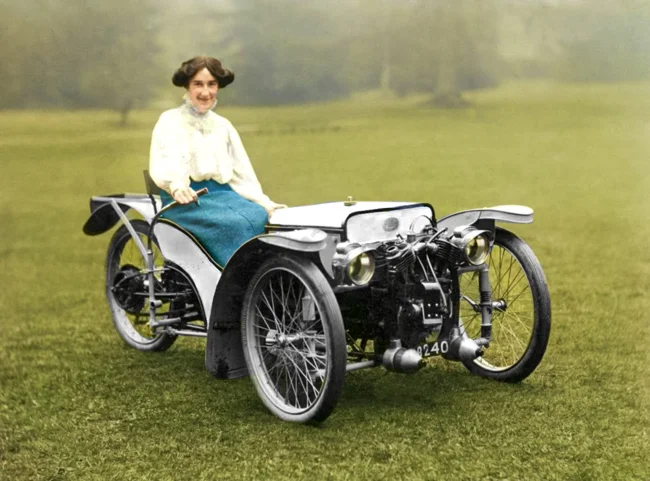
A two-wheeled car of the P. P. Shilovsky system on the streets of London, 1914.
This car was kept in balance by the gyroscopic effect produced by a heavy 600 kg flywheel. 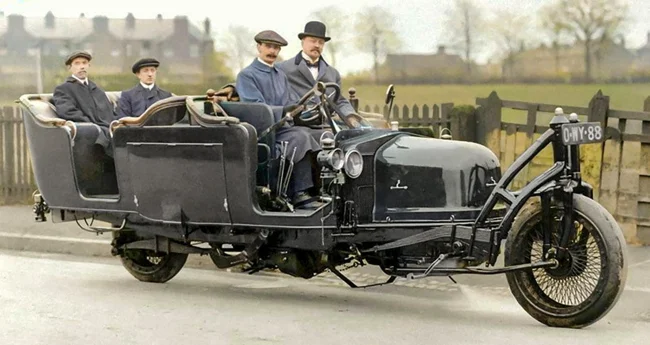
The L’ Automodule ball-mobile, created by Jean Pierre Pontier in 1970 for advertising purposes. 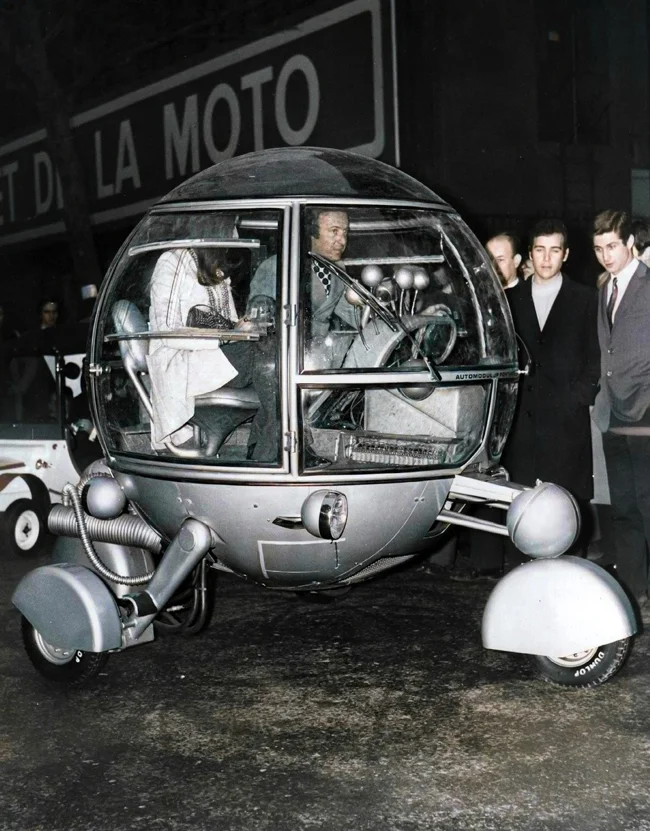
Panhard & Levassor Type A P2C/P2D, early 20th century.
Panhard & Levassor is a French automobile manufacturer founded in 1886 by René Panhard and Émile Levassor.
The company was one of the first in the world to produce cars for sale. 
Sir Malcolm Campbell and the Campbell-Railton-Rolls-Royce Blue Bird, 1933.
The Blue Bird was developed by racing driver Malcolm Campbell in 1931-1933 specifically for setting speed records. The car was unveiled on February 22, 1933 at the Daytona races, when Campbell set a land speed record of 438 km/h.
All thanks to the V12 engine from Rolls-Royce with a displacement of 36 liters and a power of 2500 hp. 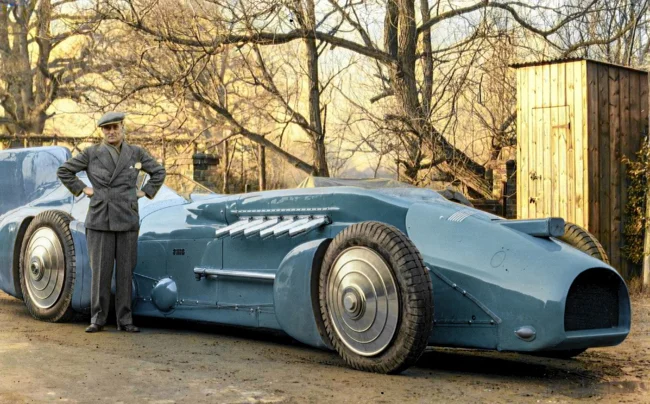
Barney Oldfield at the wheel of the 1907 Christie V-4 racing car. 
A man driving a homemade Ford T-based snowmobile in the woods, Michigan, 1926. 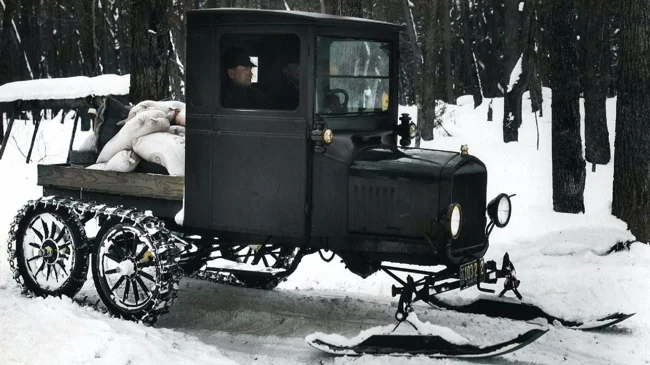
A vehicle for transporting the disabled. San Francisco, 1926. 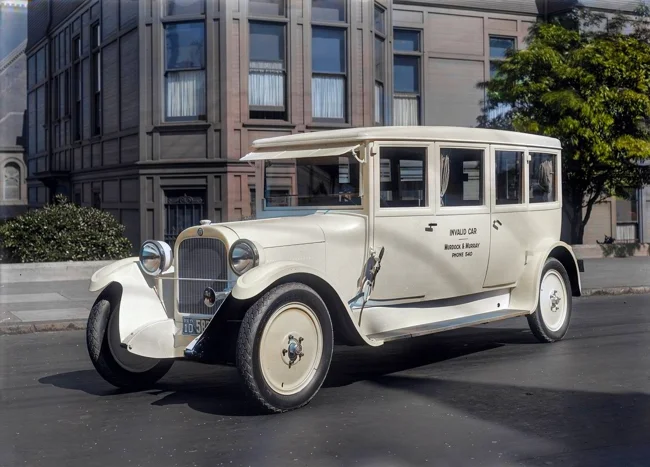
Milton Reeves' Octo-Auto. USA, 1911.
Milton Othello Reeves was a pioneer of the American automobile industry. He held over 100 patents.
In 1911, Reeves modified a 1910 Overland model by adding four extra wheels and calling it the Reeves Octo-Auto. It had a 40 horsepower engine, was over 20 feet long, seated four passengers, and retailed for $3,200.00. 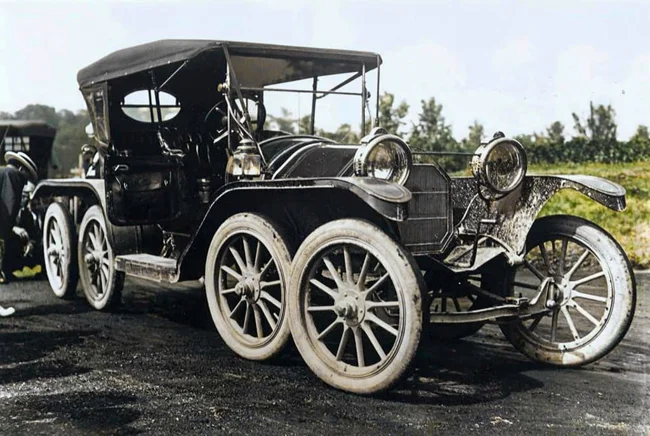
Girl in an electric car at a charging station, 1912.
The car has no steering wheel. Back then, steering wheels were rare, and the car was controlled by levers. 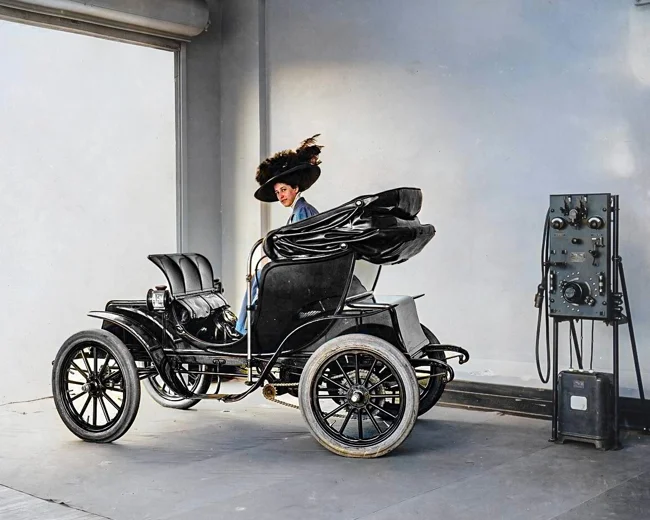
Boat on wheels, the brainchild of Peugeot, 1926.
This is an advertising "product car" for the Peugeot Nautic division, which was engaged in the creation of motorboats and yachts.
In essence, this is just a boat hull mounted on a car chassis, capable of independently moving on roads, but not on water. 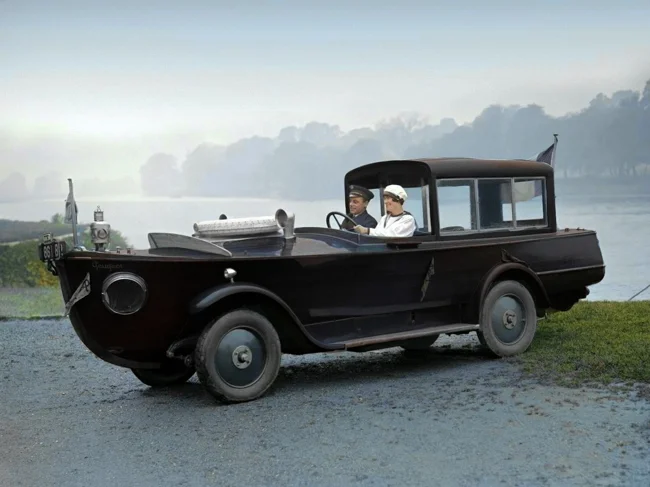
Advertising poster for the Opel Kapitän, Germany, 1951-1953. 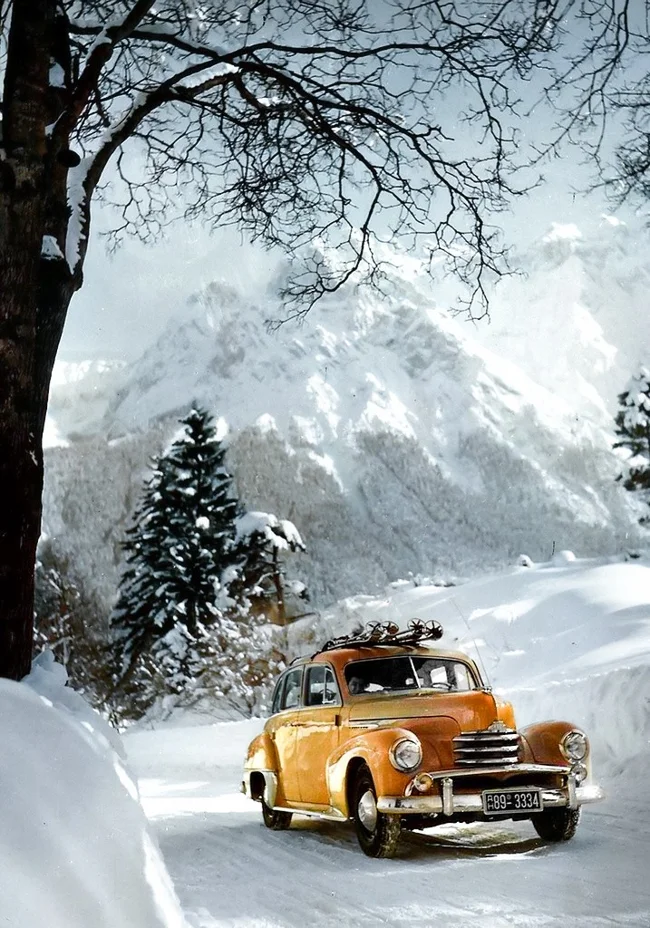
Girl and Audi 50, 1970s. 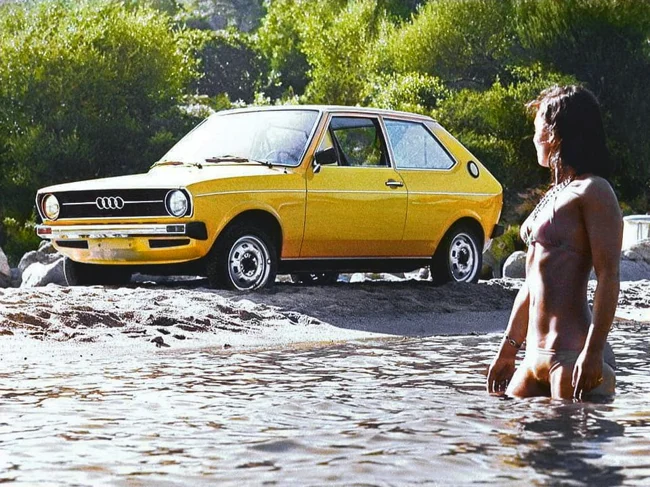
Mercury Mermaid. USA, 1957.
Ideal for egoists or misanthropes. 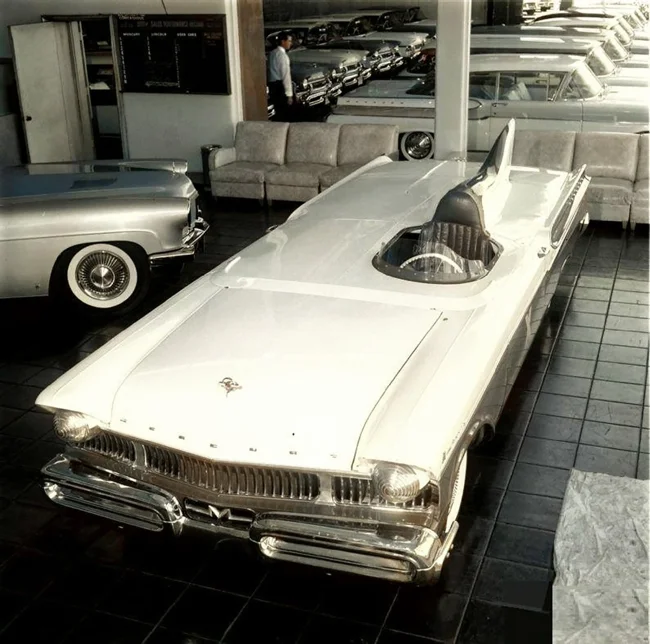
AvtoVAZ test track. Tolyatti, 1973.
For its time, the car was awesome. Unfortunately, 50 years later, the cars have not undergone any significant changes. 
A wrecked car on the streets of Washington, D.C., 1922.
By the way, the world's first road accident involving a car was recorded on May 30, 1896 in New York during one of the first auto races in history. Henry Wells, who was driving a car, hit a cyclist Evelyn Thomas. Evelyn got away with a broken leg, and the culprit of the accident was arrested and held in custody for several days. 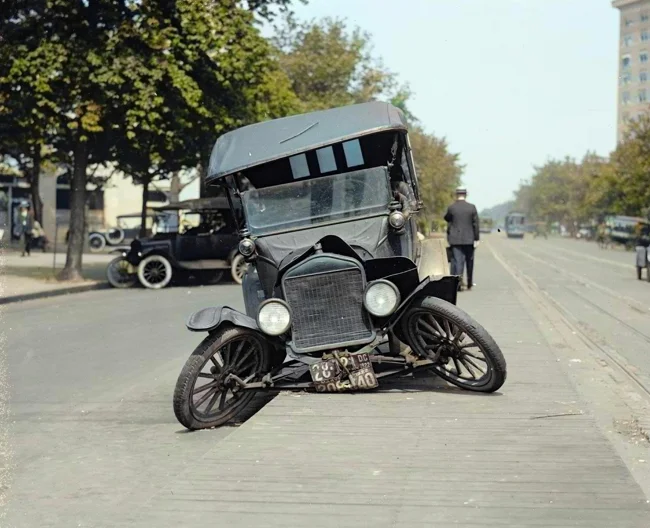
German Grand Prix, 1966.
Jackie Stewart jumps on one of the ramps of the "Green Hell" of the Nurburgring. On the right, you can see the car of one of the participants in the touring car race pushed to the side of the road. 
A Ford with a glass roof, 1947.
A Los Angeles-based convertible "glass" roof is similar to a "bubble" roof, and attaches at the same points as a regular canvas roof, making it easy to remove for storage in the family garage.
While currently clear, a choice of "tints" is planned for the future. The tops are said to be easy to clean, and scratches on the quarter-inch thick Plexiglas surface can be buffed out with car polish or wax.
The idea is creative, but not safe. And without constant air conditioning, such a car will turn into a greenhouse in the summer. 